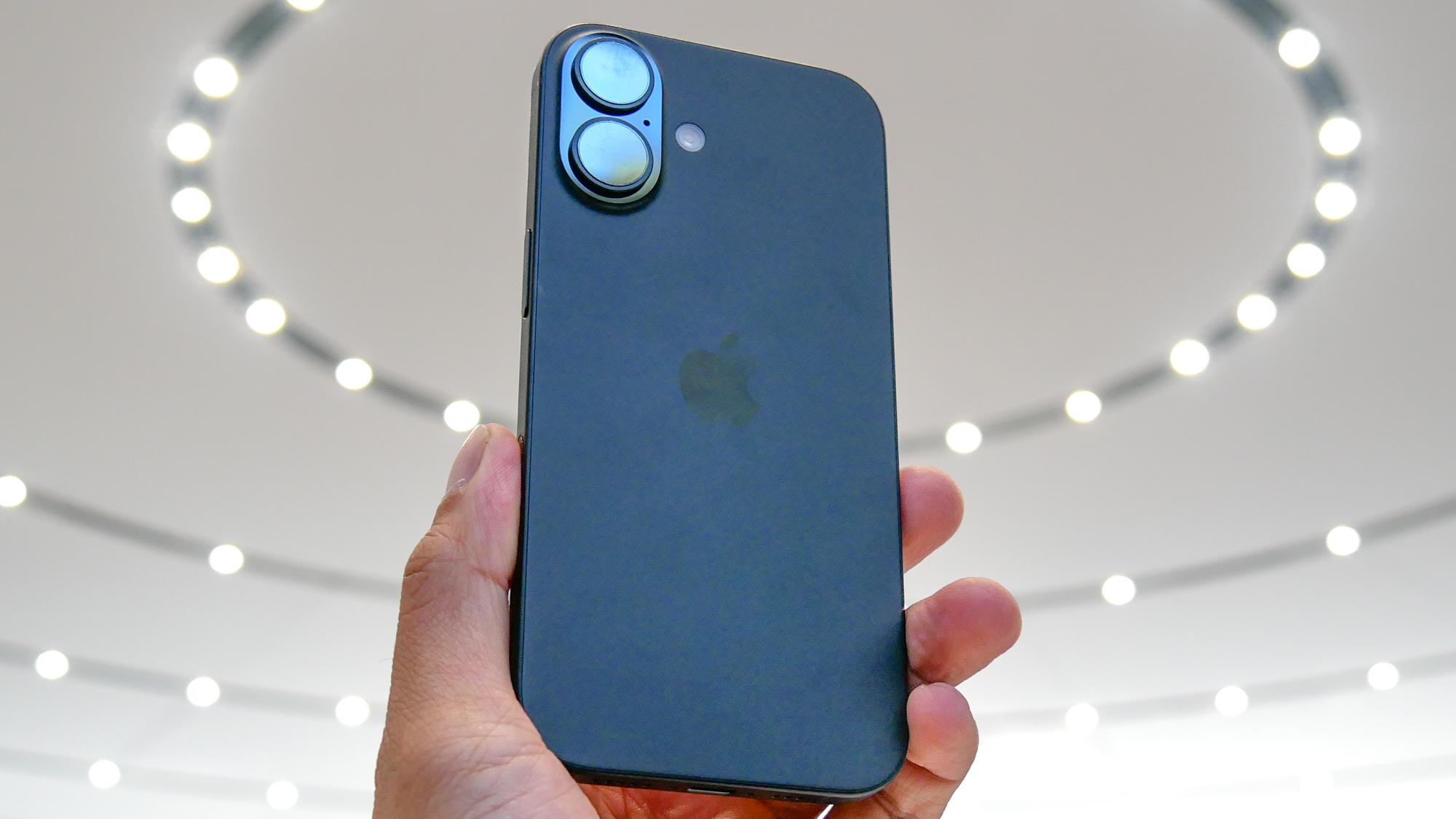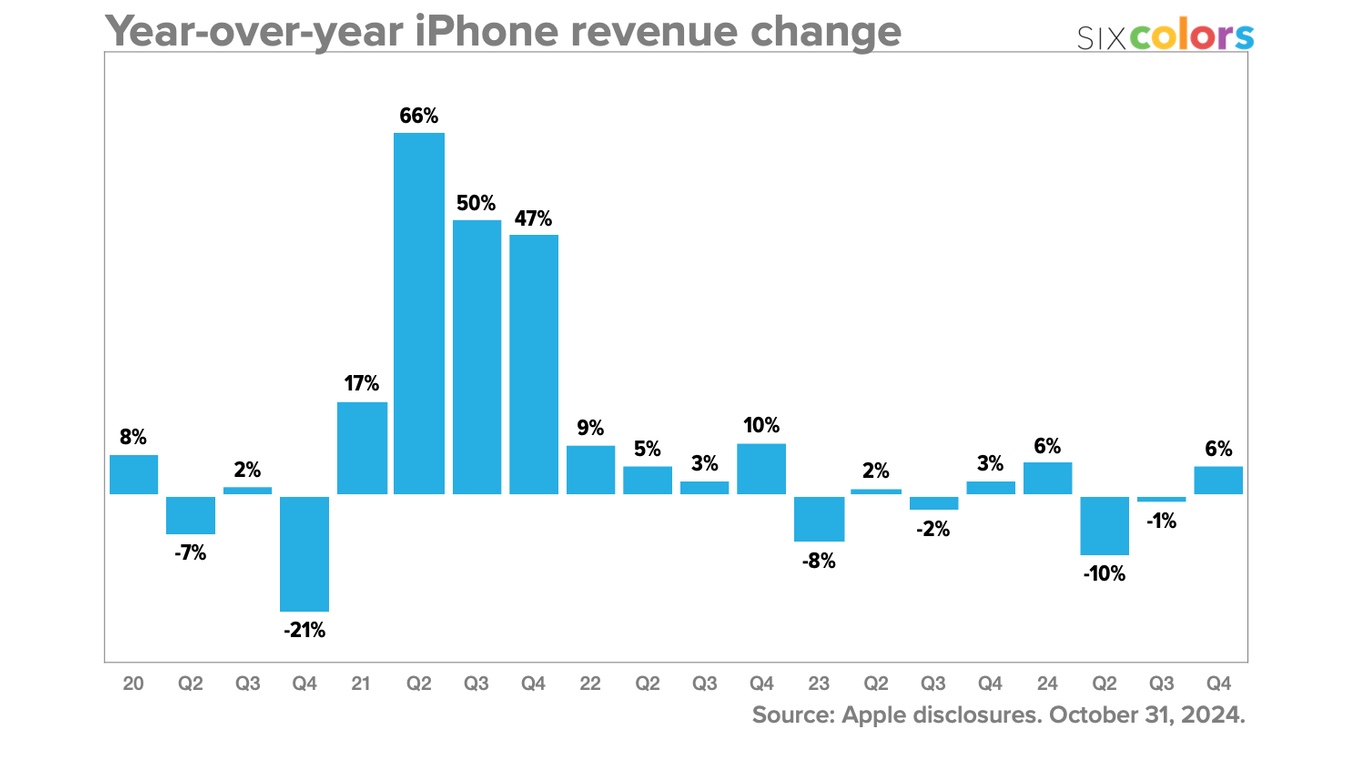
The iPhone 16 may be off to a better start than some analysts had forecast — at least if you go by the sales figures Apple just posted for its final fiscal quarter of the year. For the three months that ended September 28, Apple posted a year-over-year gain in iPhone sales, and it's pretty clear some of that was powered by the iPhone 16's September release.
Granted, the iPhone 16 models went on sale September 20, giving Apple just a week of sales for its new phones to include in the September quarter. Yet, the $46.2 billion in iPhone revenue posted these past three months marked a September quarter record for iPhone sales, which rose 6% over last year's tally.
More important, from Apple's perspective, the quarter marked a return to growth for iPhone sales. In the June and March quarters for this fiscal year, iPhone revenue dropped 1% and 10%, respectively. There were reasons for those drops — the June quarter saw Apple hit by unfavorable currency exchange rates and March's sales growth was skewed by supply chain issues the previous year. But Apple's return to iPhone sales growth surely owes some credit to the iPhone 16 launch.
"The iPhone active installed base grew to a new all-time high in total and in every geographic segment," said Luca Maestri, Apple's outgoing chief financial officer, appearing on his final conference call with Wall Street analysts. "During the September quarter, many iPhone models were among the top selling smartphones around the world. In fact, according to a survey from [marketing data firm] Kantar, iPhone was the top selling model in the U.S., urban China, the UK, Australia and Japan."

Apple doesn't break down its sales into specific products, so it's difficult to say how much of an impact one week of iPhone 16 sales had on the company's quarterly performance. Still, it's hard to imagine customers making a late run on iPhone 15 models to entirely fuel Apple's record iPhone revenue. Speaking to CNBC, Apple CEO Tim Cook said that iPhone 15 sales were stronger than the iPhone 14 sales in the year-ago quarter while also noting that iPhone 16 sales were stronger than the iPhone 15 in the comparable period.
Heading into the earnings call today (October 31), some analysts had been forecasting lighter demand for the iPhone 16, citing Apple reducing orders from its suppliers for the new phones. We'll get a more complete picture in January when the company reports holiday sales figures, which will include the first full quarter of iPhone 16 numbers.
Apple seems relatively optimistic about its prospects for the holiday, even with a forecast of low to mid-single digit growth in revenue for the December quarter. "We have the best lineup we’ve ever had going into the holiday season, including Apple Intelligence, which marks the start of a new chapter for our products," Cook told analysts during Apple's earnings presentation. "This is just the beginning of what we believe generative AI can do, and I couldn’t be more excited for what’s to come."
Apple provided a little bit more detail on the timeline of the Apple Intelligence rollout after this week's release of iOS 18.1 brought the first batch of Apple's AI tools to compatible iPhones. (Macs and iPads also received Apple Intelligence this week.) iOS 18.2, which came out as a developer beta last week, will arrive in December, Cook said. That update will bring Visual Intelligence features to the iPhone 16, as well as generative image creation tools in the form of the Image Playground and Genmoji.
The December update also localized English support for Apple Intelligence features in the U.K., Australia, Canada, Ireland and New Zealand. Support for other languages will come to Apple Intelligence by April 2025.
Apple posted a September record for revenue with total sales rising 6% overall to $94.9 billion. That was fueled by record revenues for service, which grew 12% to $22.1 billion.







